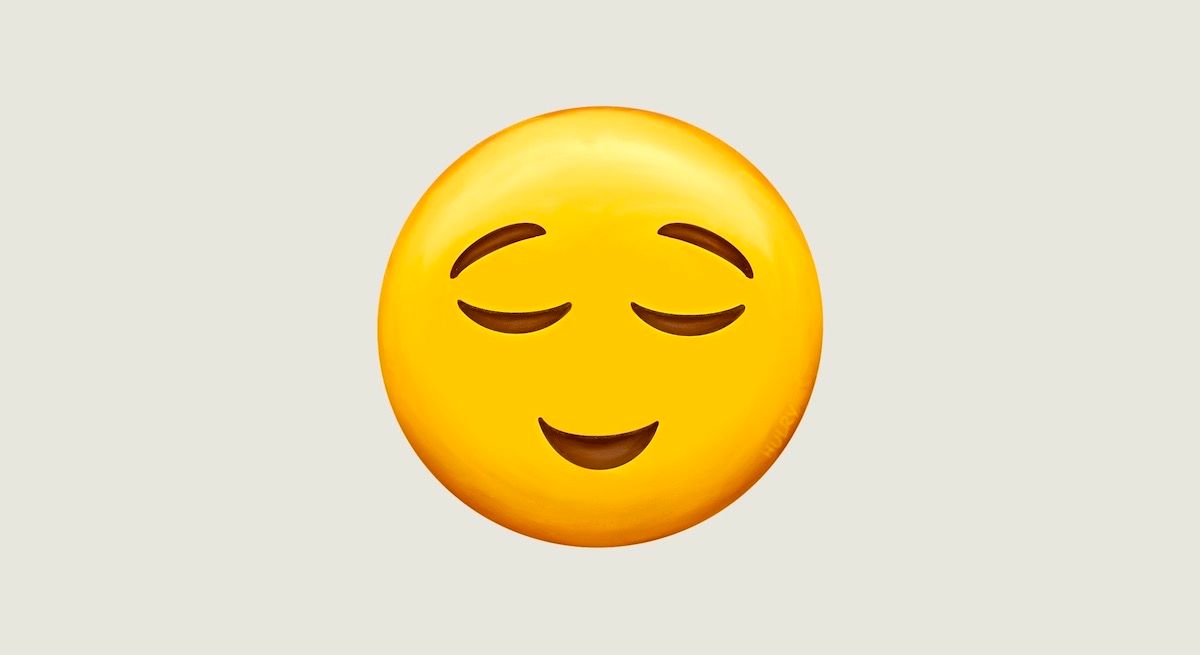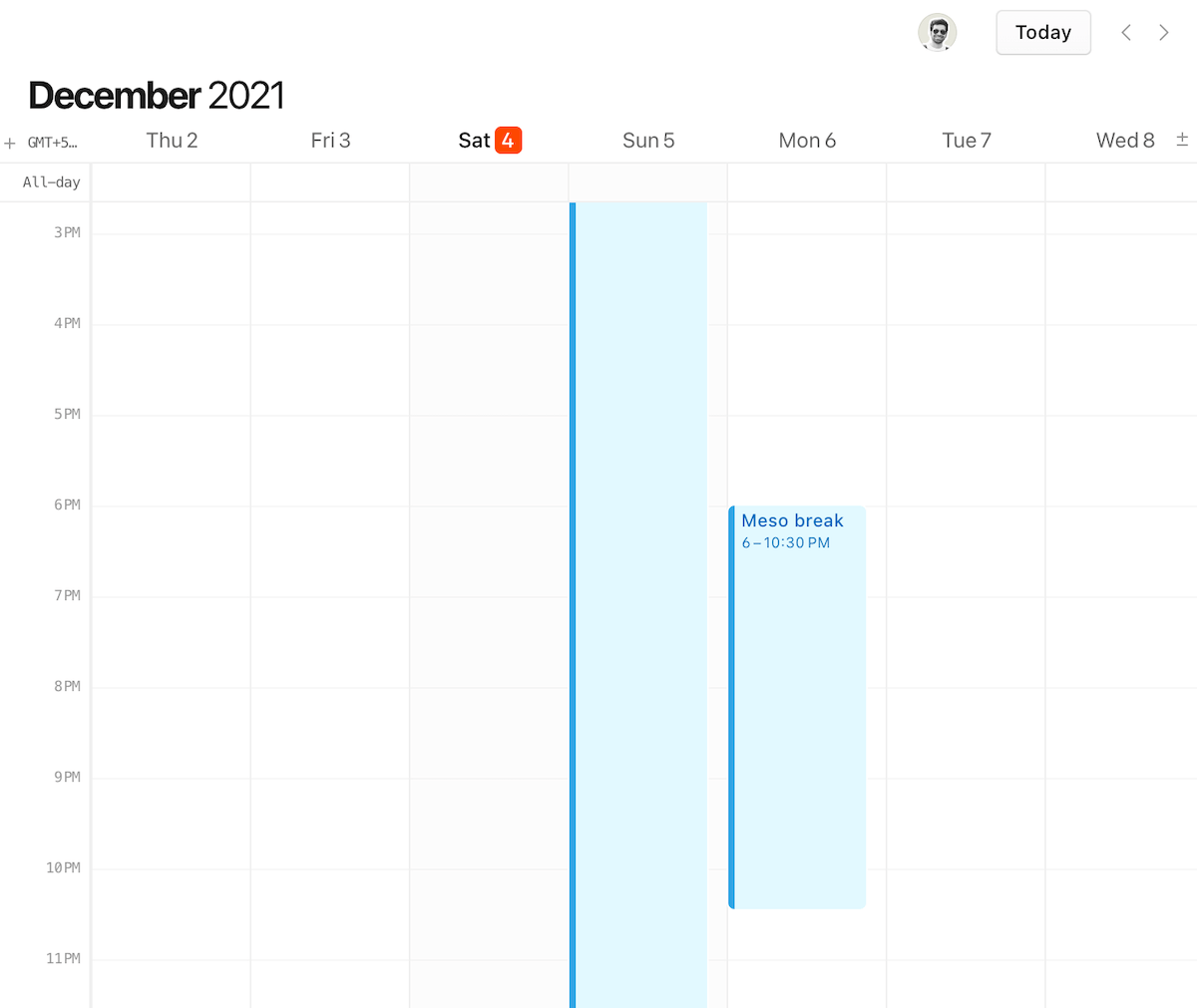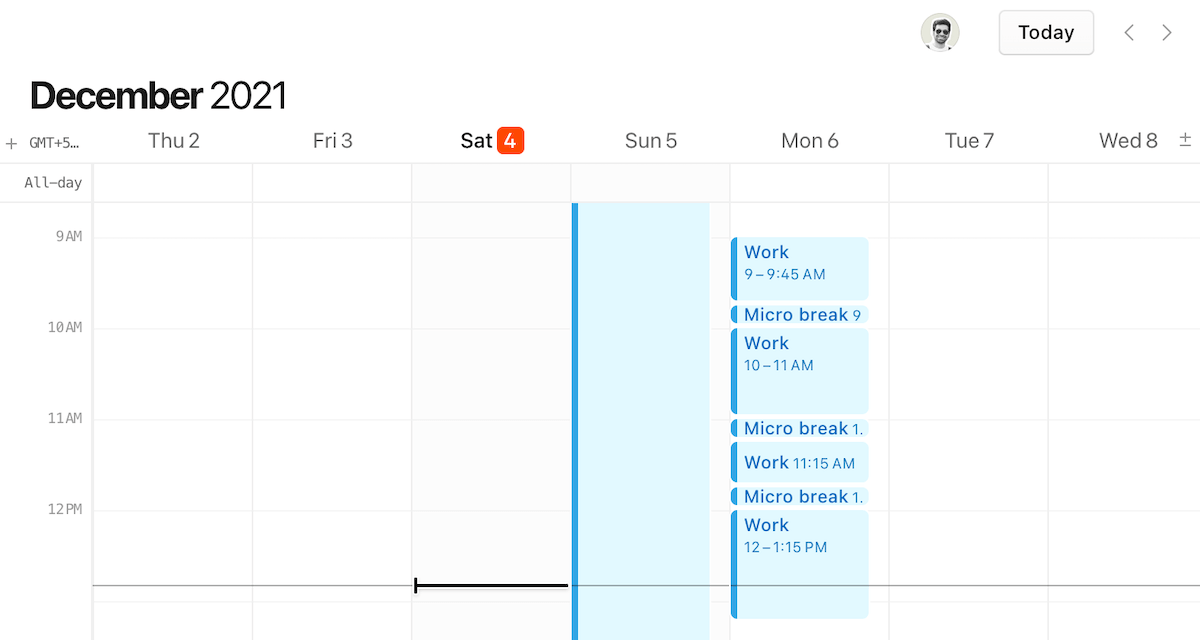Mental burnouts are at an all-time high.
With a calendar full of meetings, and no clear boundary of office hours, we’re sacrificing downtime for productivity.
But:
With mindful breaks between your work and life, it’s easy to combat burnout and live a calmer life.

Let me show you how:
In this article, I’ll talk about how I use an approach called the Macro-Meso-Micro method to keep myself from burning out while executing my ambitious goals.
Let’s start with:
How I realised the importance of breaks
In the year 2019, I was on what many people might say the “productive gear”.
I was bashing out tasks after tasks at work.
And at home, I would work through late nights building my side project at the time — a blogging platform.
You could say that I was occupied all day.
So occupied that I even spent weekends working on my side-project.
Every minute seemed like an opportunity to make progress.
I remember an evening when my wife and I were going out for dinner, and while she was getting ready, I was sitting in front of my laptop fixing bugs in my app.
But, soon enough:
This “make-the-most-out-of-every-minute” attitude led to a couple of problems.
One, I couldn’t spend much quality time with my wife as I was working all the time.
And second, I was burning myself out.
I didn’t know it yet, but I was heading towards the cliff.
And then it happened:
After a stint of a few months working non-stop with little breaks came a relapse.
My desire to work on my side-project faded as I craved for some quality rest.
I couldn’t take a break from my day job, so it was my side-project that took the hit.
I would come home from the office exhausted and unable to work at night as I used to a couple of months back.
And even if I mustered the energy and willpower to work after office hours, my work quality dived to an unacceptable level.
I couldn’t think straight. I had frequent brain fogs.
And this was my wake-up call.
I knew I couldn’t continue this for long. This mindless method of working overboard had to be tamed.
So:
I started reorganising my daily routine.
And that is where the Macro-Meso-Micro method of taking breaks came as a silver lining.
Let’s talk about:
Macro breaks
As the name suggests, Macro breaks are breaks on a large scale.
This can be a week or a month-long time-off every year.
Or a weekend off every month.
For me, Macro breaks happen every Sunday.
I keep one day every week off-limits to work. I don’t work on anything on that day and spend the entire day with my family doing whatever we like.
After a week-long hustle, every Sunday serves as a full day worth of rejuvenation.
Think of it as a Sabbath.
If you were to visualise this Macro break on a calendar, this is how it would look:

Now:
If your job demands you work every day of the week, you can tune your Macro breaks to your liking.
Say, a day off every month or every two weeks.
Similarly, if you have a more flexible schedule, you can scale up the break time by taking entire weekends off.
This long break will make you relaxed and provide the energy to tackle the incoming week.
But, here’s the thing:
You can’t work non-stop six days a week and expect to wear off the exhaustion in a single day.
You need downtime in between your Macro breaks too.
And this is where:
Meso breaks help
Macro breaks provide a clean break between each week or month.
But what about each day?
That’s the job of a Meso break.
Unlike my previous double-shift approach to working, I now wrap up my work every evening.
This means no work after 6 or 7 pm. Not even side-project work.
From evening to before bed, I spend the time with my family or indulge in some fun activity, take a shower and enjoy a gradual shutdown ritual.
And, this approach has served me astoundingly well.
Every morning, I wake up more energised and ready to tackle what’s in front of me.
Instead of waking up groggy and running on low energy from the start of the day.
Also:
Having a period of relaxation before bed helps me slowly flush out thoughts about work before I hit the pillow.
Which, in turn, results in good quality sleep.
Talking about sleep, I make sure I get adequate sleep every night.
For me, that’s around 7–7.5 hours of quality sleep time.
Good sleep not only preps us for the next day but is also essential to flushing out toxins in our brains accumulated while we’re awake and working.
Taking our earlier visualisation example, this is how a Meso break would look in a calendar:

As you see, there’s a clean break between each day.
Work-Sleep-Repeat becomes Work-Relax-Sleep-Repeat.
Now, you might be thinking:
How do I get time for my side-projects which includes this blog?
I get up at 6:30 am every morning and spend an hour or two every day before the office to work on Hulry.
And on days when I need some extra time, I spend a maximum of one hour after my office hours to close the necessary tasks.
This way, I can still wrap up work before 7 pm and commence my shutdown ritual.
But:
If you work better later in the day, making sure you have a resting period of a few hours before bed ensures you’re not clouding your mind with thoughts about work.
Thus, getting quality and energising sleep at night.
Now:
Unlike a machine, we can’t work non-stop for 8–10 hours.
We humans need breaks in between work to clear our mind, relax and refresh.
And we can do that with:
Micro breaks
You’re already familiar with Micro breaks.
It’s that little break time after a session of work.
A tea or coffee break. Chatting with a coworker or just taking 5 minutes to relax.
Micro breaks help us pause between intense work sessions and catch up with the world around us.
Think of Micro breaks as little power boosters.
And, unlike Macro and Meso, Micro breaks occur multiple times throughout the day.
This is how a Micro break would look like on a calendar:

Now:
As conventional wisdom goes, you can schedule your Micro breaks every 30–60 mins, but I’ve felt that it becomes too mechanical.
Sometimes I’m so in the flow that taking a break at a fixed time interrupts my work and causes more harm than good.
So instead:
I take breaks as I see fit.
For example, as I’m writing this article, I’ve taken multiple Micro breaks once after finishing each section.
But, this approach is not a silver bullet.
As I mentioned, interrupting your flow does more harm by extending the time required to return to another flow state.
So, when I’m extremely focused, I take a Micro break when I naturally come out of a flow state.
That might be after an hour of focused work or after I fix an issue at work.
With a 5–10 min break doing whatever I want, listening to music, reading a book, playing with my dog, or just taking a deep breath and calming down, I return to work better equipped to handle what’s in front of me.
Here’s an equation that I follow when it comes to deciding my break time:
Long working period = Long breaks.
So, if I worked for 20 mins, I would usually take a 5 min breather.
But if I continuously worked for an hour, I would take a longer break time of 15–20 mins.
Now, if you keep forgetting to take breaks, here’s what you can do:
Start scheduling breaks in your day.
With apps like Intermission, you can remind yourself to take a minute from what you’re doing every 20 or 30 mins and relax.
You can also use a reminder app or a calendar to put in break time reminders.
Whatever helps you establish a habit of taking breaks.
This habit provides a meaningful pause and reduces chances of dry eyes by breaking the continuous gaze at a screen.
So, now that you’re aware of Macro, Meso and Micro breaks, here’s:
How to make the Macro-Meso-Micro method your own
What works for me might not work for you.
With that in mind, take the concept of the Macro-Meso-Micro method as learning and tweak it to work for you.
You get the drill:
- Macro breaks → Long breaks.
- Meso breaks → Intermediate breaks. Shorter than Macro, longer than Micro.
- Micro breaks → Short breaks.
With this understanding, have a look at your current routine.
Figure out where can you insert these breaks to help you be more relaxed and motivated at work.
And then, it’s simply a matter of stopping whatever you’re doing and taking breaks as you planned with this technique.



 In-depth articles, series and guides
In-depth articles, series and guides
